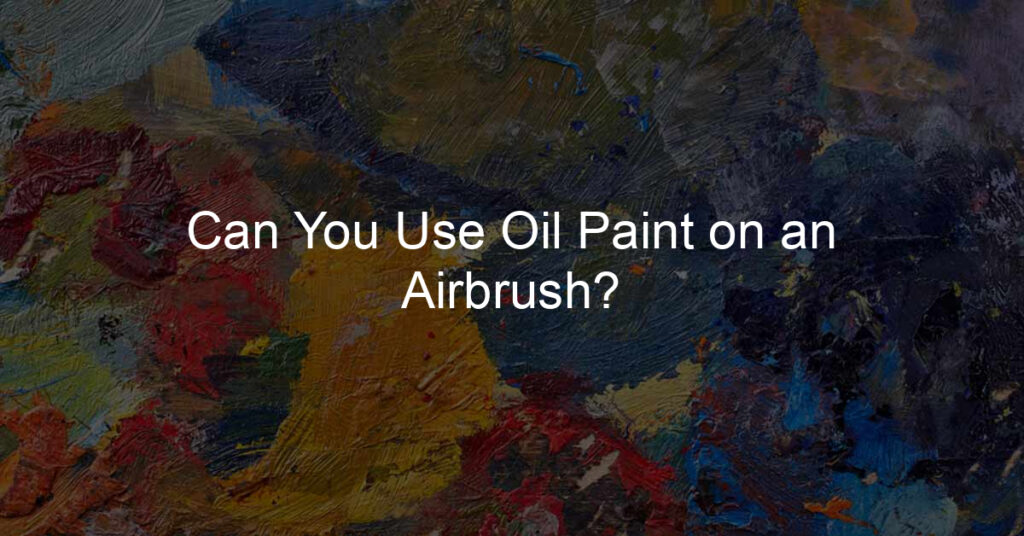Oil painting and airbrushing are two distinct artistic techniques that have been used for centuries to create stunning visual masterpieces. While each has its own unique set of materials, techniques, and applications, some artists may wonder if it is possible to combine the two – specifically, can oil paint be used in an airbrush?
The answer to this question is not a simple yes or no. There are some considerations and challenges that may arise when attempting to use oil paint in an airbrush, but it is not an impossible feat. In this article, we’ll delve into the intricacies of utilizing oil paint with an airbrush, the potential obstacles that an artist may face in this process, and some tips and tricks to make oil paint work in an airbrush setting. The information provided will allow artists to make an informed decision about whether using oil paint in an airbrush is the right choice for their project.
Oil Paint and Airbrush Compatibility
High Viscosity of Oil Paint
Oil paint is a thick medium with a high viscosity, meaning it does not flow as easily as other paints like acrylics or watercolors. This characteristic of oil paint makes it difficult to use with an airbrush, which requires thin, watery paint to flow seamlessly through the nozzle. To use oil paint in an airbrush, one must thin the paint significantly with solvents, which can change the paint’s properties and behavior.
Clogging Risks
Even with thinning, the high viscosity of oil paint presents a risk of clogging within the airbrush. Clogs can form at various points within the airbrush, affecting performance and spray consistency. The thick nature of oil paint may require you to clean the airbrush more frequently to prevent clogs and maintain proper function. Dealing with clogged airbrushes can be time-consuming and frustrating, especially when frequent cleaning interrupts your work process.
Solvents and Health Concerns
To make oil paint compatible with an airbrush, solvents are necessary to thin the paint. These solvents often contain volatile organic compounds (VOCs) and can emit harmful fumes during the airbrushing process. Prolonged exposure to these chemicals can have negative effects on your health, so proper ventilation and personal protective equipment (like masks and gloves) are essential when using solvents with oil paint in an airbrush. Additionally, the disposal of solvents should be done carefully, according to local regulations, to minimize environmental harm.
In summary, while it may be possible to use oil paint in an airbrush, the process is complicated by the high viscosity of oil paint, risks of clogging, and health concerns related to solvents. Though not impossible, there are more efficient and safer alternatives for airbrush applications, such as acrylic or watercolor paints, which do not pose the same challenges as oil paints.
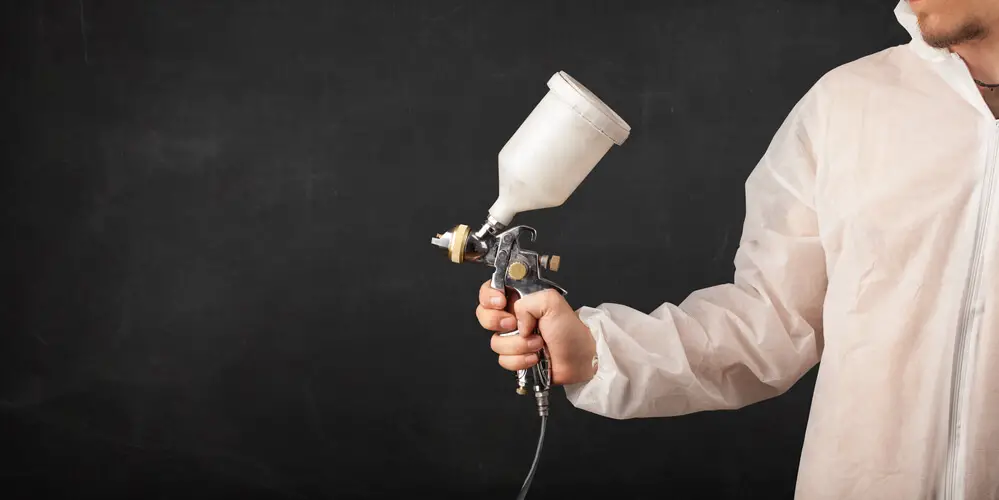
Preparing Oil Paint for Airbrush Use
Thinning Oil Paint for Airbrushing
To use oil paint in an airbrush, it must be thinned to the correct consistency. Thinning is essential to achieve even coverage and prevent clogging. The ideal consistency for airbrushing is similar to that of milk. Achieving this consistency may require experimentation with different thinners and ratios.
Dilution Methods
There are several methods for diluting oil paint for airbrush use. Some common diluting agents include:
- Turpentine: Traditional and effective, but has a strong odor and can be harmful if not used in a well-ventilated space.
- Odorless mineral spirits: A less toxic alternative to turpentine but provides similar results.
- Linseed oil: A natural option, but it may not be suitable for all airbrushes due to its thick consistency.
Begin by mixing small amounts of the thinner with the oil paint. Gradually increase the dilution until you reach the desired consistency. Be cautious not to over-thin the paint, as it may lose its adhesion properties.
Using Binding Primers
Binding primers are useful when working with thinned oil paint to ensure proper adhesion to the surface being painted. These primers are applied before airbrushing the paint, creating a suitable base for the oil paint to bond with. Some popular binding primers include gesso, clear acrylic mediums, or dedicated airbrush primers.
Remember, for a successful airbrush experience with oil paint, you must thin the paint to the right consistency and use an appropriate binding primer to promote adhesion.
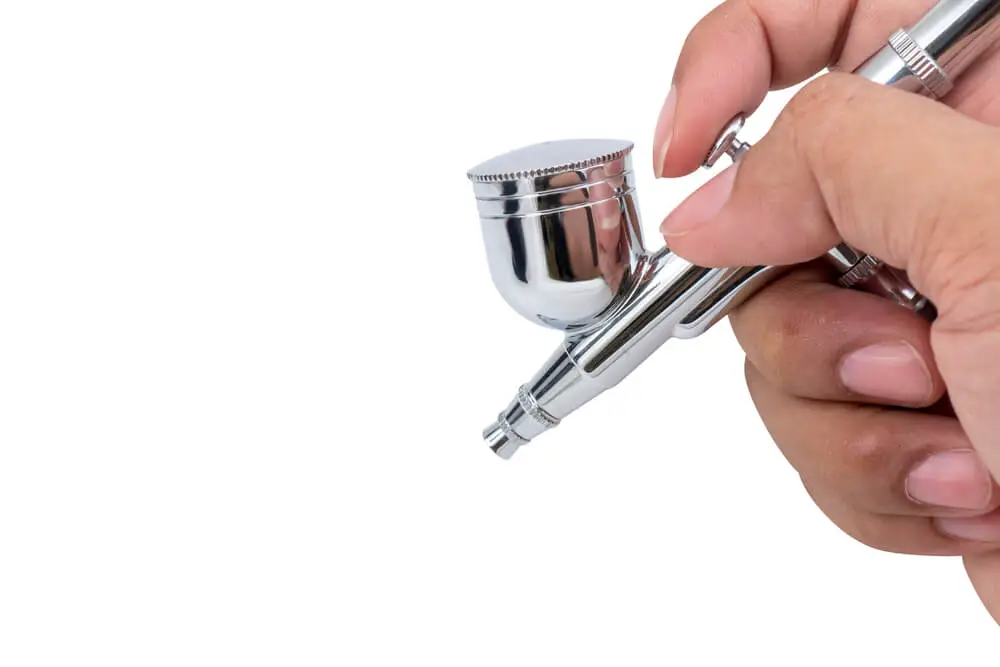
Alternative Paint Types for Airbrushing
Instead of using oil paints with an airbrush, there are several alternative paint types that can offer better results and may be more suitable for airbrushing. This section will discuss five alternative paint types: Acrylic Paints, Watercolors, Enamel Paints, Urethane Paints, and Latex Paints.
Acrylic Paints
Acrylic paints are a popular choice for airbrushing due to their versatility and ease of use. They are water-based paints, which means they can be thinned and cleaned with water, making them a safer and more environmentally friendly option compared to oil-based paints. Acrylics are available in a wide range of colors and can be used on various surfaces, such as canvas, paper, and metal. When properly thinned, acrylic paints will flow smoothly through the airbrush, and they dry quickly, reducing the risk of paint runs or smears.
Watercolors
Watercolors are another water-based paint option for airbrushing. They are often chosen for their transparency and can create a soft, delicate effect on the canvas. Watercolors can be easily thinned and mixed, allowing for smooth and even coverage with an airbrush. However, it is essential to note that watercolors can be more challenging to control and may require additional practice or skill to achieve the desired results.
Enamel Paints
Enamel paints are oil-based and offer a durable, glossy finish that is resistant to chipping and fading. They are commonly used for model painting and automotive work as they are hard-wearing and provide excellent coverage. Enamel paints can be thinned with specific enamel thinners, which make them suitable for airbrushing, though they may not offer the same level of flow and ease of use as acrylics or watercolors.
Urethane Paints
Urethane paints are a type of enamel paint, often used for automotive and other industrial applications. They offer excellent resistance to damage from chemicals and UV light, making them a durable and long-lasting choice. Urethane paints need to be thinned using compatible thinners and, as a result, may not be as user-friendly as water-based alternatives. It is crucial to practice proper safety precautions when using urethane paints, as they can produce harmful fumes.
Latex Paints
Latex paints are water-based paints that provide good coverage and durability. They are typically used for wall and ceiling painting but can be adapted for airbrushing. Latex paints need to be thoroughly thinned and mixed to achieve the correct consistency for airbrushing, and the nozzle size of the airbrush should be considered. Although not as commonly used as acrylic or enamel paints for airbrushing, latex paints can still provide a unique and versatile option.
Airbrush Equipment and Accessories
Airbrushes and Nozzles
Airbrushes come in a variety of types and sizes, each designed to handle specific applications and paints. The most common types are gravity-feed, siphon-feed, and side-feed airbrushes. No matter the type, it is important to choose a compatible nozzle for the intended paint. Thicker paints, like oil paints, may require a larger nozzle diameter to maintain an even spray.
Compressors
An essential part of any airbrush setup is the compressor, which provides the necessary compressed air to propel paint through the nozzle. A reliable and consistent flow of air is crucial for achieving smooth, even coverage with your airbrush. Look for a compressor that offers pressure control, so you can adjust it to suit the viscosity of the paint you’re using.
Reducers and Thinners
Oil paint is typically thicker than other types of paint used in airbrushing and, as such, requires reducers or thinners to lower its viscosity. Specially formulated airbrush paint thinners are available to ensure compatibility with your airbrush and to help maintain the integrity and performance of your equipment. Be cautious when using alternative thinners, as they may not be compatible with all airbrushes and could lead to performance issues or damage.
Cleaners
Keeping your airbrush clean and well-maintained is important, as build-up or residual paint can impact performance and longevity. Airbrush cleaners, designed specifically for removing paint from your equipment, should be used regularly to avoid problems. When working with oil paint, be sure to choose a cleaner that is formulated to remove oil-based paint, as water-based cleaners may not be effective.
Cleaning and Maintenance
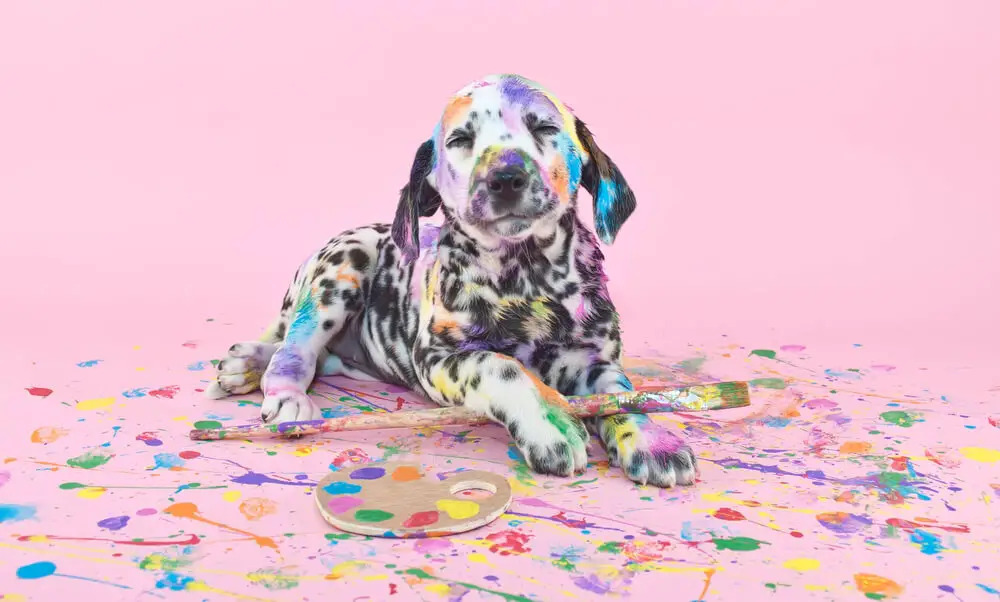
Proper Cleaning Techniques
To maintain the efficiency of your airbrush when using oil paint, proper cleaning techniques are crucial. Begin by flushing the airbrush with a compatible solvent, such as mineral spirits or white spirit, to remove residual paint. Disassemble the airbrush and thoroughly clean every part, including the nozzle, needle, and paint cup. Use a soft brush to reach any crevices where paint may be lodged. Always avoid using harsh chemicals or abrasive tools that could damage the equipment.
Safe Solvent Disposal
Disposing of used solvents responsibly is essential for both the environment and your safety. Always store solvents in closed, labeled containers, and avoid pouring them down the drain or into the ground. Check with your local waste management facility for information on proper disposal methods. Some facilities offer recycling programs for used mineral spirits and white spirits, which can be an environmentally friendly option.
Ensuring Airbrush Longevity
To ensure the longevity of your airbrush, follow these tips:
- Always clean your airbrush thoroughly after each use, especially when using oil paint which can be more challenging to remove.
- Lubricate moving parts with a suitable airbrush lubricant to reduce friction and wear.
- Store your airbrush in a clean, dry environment when not in use.
- Replace worn or damaged parts as needed to maintain optimal performance.
By adhering to these cleaning and maintenance practices, along with safe solvent disposal, you can confidently and effectively use oil paint with your airbrush while minimizing any potential damage to your equipment and the environment.
Safety Precautions When Using Oil Paint and Airbrush
Working in a Ventilated Area
It is essential to work in a well-ventilated area when using oil paint and airbrush tools. The fumes from oil paints, thinning agents, and airbrush propellants can be hazardous to your health. Ensure that there is proper air circulation in your workspace by opening windows, using fans, or employing an air filtration system. This will help reduce the risk of inhaling harmful fumes and maintain a safe environment.
Wearing Protective Gear
While working with oil paint and airbrush, it’s crucial to wear appropriate protective gear, including a mask or respirator. A mask helps filter out airborne particles, while a respirator provides an extra layer of protection against chemical fumes. Wearing gloves is also essential to protect your skin from possible irritation or contact with the paint or thinner. Make it a habit to wear these protective items to ensure your safety while working.
Proper Storage of Materials
The safe handling of materials like oil paint, thinners, and airbrush propellants is necessary for avoiding accidents or exposure. Store your materials in a cool, dry location, away from direct sunlight or heat sources. Ensure that your containers have tight-fitting lids to prevent exposure to air and minimize the risk of spills. Also, never store materials near an open flame, as they can be highly flammable.
By following these safety precautions, you’ll be able to work confidently and effectively with oil paint and airbrush while maintaining a healthy and secure environment.
Popular Airbrush Paint Brands and Products
Createx
Createx is a well-known airbrush paint brand, offering a comprehensive range of water-based acrylics. The Createx Colors Airbrush Paint line is known for its versatility and ease of use, making it a top choice for airbrush artists. These paints are mixable for a wide array of color options and provide excellent coverage. Createx paints can be used on various surfaces, from textile and leather to paper, wood, and plastics.
Wicked Colors
Wicked Colors by Createx is another popular airbrush paint line, specifically designed for automotive and industrial applications. These paints offer durability and vibrant color output. Wicked Colors come in various finishes, including matte, semi-gloss, and high gloss, providing options for diverse preferences and projects. They also have exceptional adhesion and can be applied to a multitude of surfaces, including metal, glass, and fiberglass.
Vallejo
Vallejo is a reputable airbrush paint brand, offering an extensive range of acrylic paint products. Vallejo Model Air and Vallejo Model Color are two of their most popular lines, with Model Air specifically designed for airbrush use. The paints have a finely ground pigment and provide excellent coverage, even detailing on miniatures and scale models. Vallejo’s airbrush paint line also includes a variety of finishes and additives, making it a favorite among artists and hobbyists alike.
Airbrush Applications and Techniques
Fine Art
Airbrushing is a popular technique used by many artists to create highly detailed and realistic artwork. The use of an airbrush allows for a greater control over the paint application, allowing artists to create smooth color transitions, fine details, and striking visual effects. Common mediums for airbrush art include acrylics and watercolor, providing a wide range of possibilities for artistic expression.
Makeup and Body Art
Airbrush makeup is a popular choice for professional makeup artists in the fashion, television, and film industries. It provides a flawless, natural-looking finish that can be easily and quickly applied. Using an airbrush to apply makeup allows for better control and coverage while eliminating the need for brushes and sponges. In addition to makeup application, airbrushing is also used to create stunning body art and temporary tattoos.
Decorative and Hobbies
Airbrushing can be used for a variety of decorative applications, including customizing clothing, home decor items, and even murals. It’s an ideal technique for creating intricate designs on fabric, glass, and ceramics. Moreover, airbrushing is widely used in the hobby industry for tasks such as painting model airplanes, cars, and action figures. The fine detail that can be achieved with an airbrush makes it the perfect choice for these intricate projects.
Frequently Asked Questions
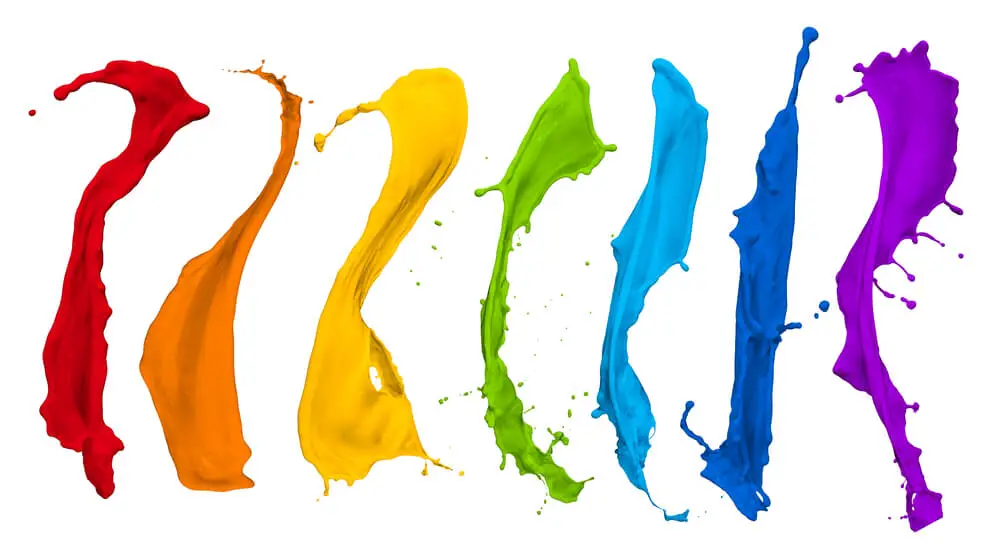
What is the best paint type for airbrushing?
The best paint type for airbrushing is typically acrylic paint. Acrylic paint is water-based, making it easy to thin and clean up. It also dries quickly and can be used on various surfaces. It offers a wide range of colors, making it suitable for many airbrushing projects.
How can one thin oil paint for airbrushing?
To thin oil paint for airbrushing, use a compatible medium like linseed oil or a specific airbrush oil medium. Mix the paint and the medium in a small container, with a consistency similar to milk. For better spraying results, use a high-quality, finely-ground oil paint.
Is it possible to airbrush over dried oil paint?
Yes, it’s possible to airbrush over dried oil paint. However, it is essential to ensure that the oil paint is thoroughly dry, which can take several days or even weeks, depending on the paint’s thickness. Applying an airbrushed layer over dried oil paint may also require a clear sealer or isolation coat for better adhesion.
Can enamel paint be used with an airbrush?
Enamel paint can be used with an airbrush, but it must be thinned with the appropriate thinner and used in well-ventilated areas due to its strong odor. Enamel paint takes longer to dry than acrylic or water-based paint, so take this into consideration when planning your work.
How do you prepare acrylic paint for airbrushing?
To prepare acrylic paint for airbrushing, thin it with water, airbrush medium, or a specific acrylic paint thinner, depending on the manufacturer’s recommendations. Add the thinner slowly to achieve a milky consistency, ensuring that the paint is well mixed for smooth application.
What materials are needed to clean an airbrush after using oil paint?
To clean an airbrush after using oil paint, you will need a solvent such as mineral spirits, turpentine, or a specialized airbrush cleaner. You should also have a cleaning brush, a container to hold the solvent, and lint-free wipes or paper towels to remove any remaining residue. Clean the airbrush thoroughly to ensure that it remains in good working order for future use.

